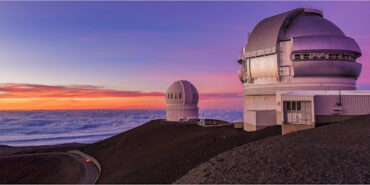As we all know astronomy is a science that has been practiced for centuries and everyone wants to observe stars and planets in an unobstructed area. Previously people used to go to hilly areas to observe the stars and the planets for better view. But as time passed and due to advancements in science and technology and our curiosity to know more about space and these celestial bodies, the need for the construction of dedicated astronomical observatories felt.
Astronomical observatories are the place which is well well-equipped with high-resolution telescopes and auxiliary instruments with which we observe celestial objects and phenomena.
These observatories are among the most cutting-edge research centers in the world, featuring large telescopes, detectors, and other cutting-edge equipment. Each observatory, which may be found all around the world, has distinct characteristics and aims in science.
We cover diverse observatories, their need, and their importance through our “Space Explorers Workshop – Virtual Observatory Tour”. Furthermore, we execute a virtual tour to visit one observatory and learn how it functions. We believe in inspiring the boundaries of exploration and unraveling the mysteries at Space India. Our cutting–edge Astronomical Observatory demonstrates our dedication to understanding the universe.
Our state–of–the–art facility is outfitted with telescopes and advanced technology that allows us to peer into the depths of space. Our dedicated team of astronomers and scientists works tirelessly to solve the universe’s mysteries. We are constantly expanding our knowledge of the universe, from studying distant galaxies and nebulae to observing planetary phenomena.
In this blog, we will take a tour of some of the important observatories and will learn about their significance, history, and the ground-breaking discoveries they’ve sparked.
MAUNA KEA OBSERVATORIES, HAWAII, USA:

Mauna Kea Observatories are a collection of astronomical observatories located on a dormant volcano in Hawaii, USA. The specific feature of Mauna Kea Observatories is its altitude of about 13796 feet (4205 meters) above sea level. This high altitude allows the telescope to capture clear images with reduced atmospheric refraction.
PARANAL OBSERVATORY, CHILE:

Paranal observatory is located at 2635 meters above sea level in the Atacama Desert of Chile. The premier facility for European ground-based astronomy and one of the top astronomical observing sites in the world is ESO’s Paranal Observatory. It is home to the Very Large Telescope (VLT) array. Because of the optical interferometer made possible by four VLTs of 8.2-meters telescopes working, astronomers can observe galaxies, exoplanets and stars in detail.
INDIAN ASTRONOMICAL OBSERVATORY (IAO):

The Indian Astronomical Observatory is a high-altitude astronomy station which is located at Hanle in South Eastern Ladakh territory of India. The observatory has 2.0 1 m optical infrared Himalaya Chandra telescope Casse green telescope, Growth-India telescope and High-Altitude Gamma Ray Telescope. It contributed in exploration of various field such as original revolution of stars Galaxy and exoplanets.
GREEN BANK OBSERVATORY:

Green Bank Observatory is located in the national radio quote zone in Green Bank, Virginia US. The most important feature of this observatory is the Green Bank Telescope which is massive and the world’s largest fully steerable radio telescope. It’s a national radio quote zone location that helps to minimize Radio Interference and make it sensitive for radio astronomy research. It played an important role in discovery of Pulsar (highly magnetized rotating neutron star).
These are some observatories around the world but these are not the only observatories. There are more than 100 of observatories all over the world which are only for the exploration of the space and cosmic world.
—
If you like the blog, enroll your school or yourself (k-12 student) in our School Programs or Online Programs, call us at +91-74020 74020 or write to us for any query: getintouch@space-india.com


